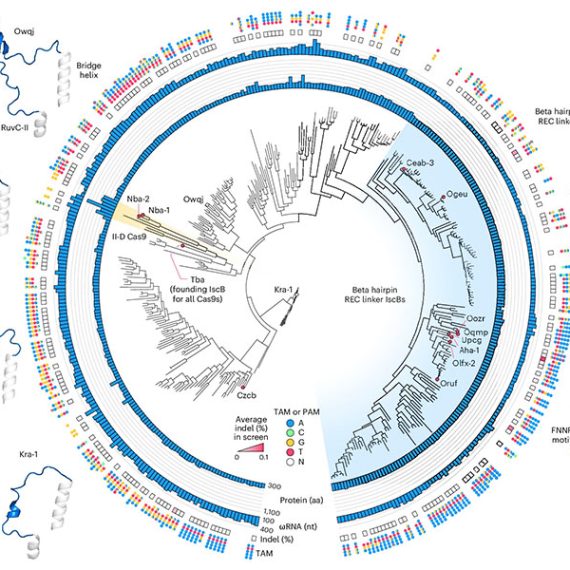What is CRISPR?
CRISPR in an nutshell: Originally derived from bacterial immune systems, enzymes from CRISPR systems are revolutionizing biology.
To view this video please enable JavaScript, and consider upgrading to a web browser that supports HTML5 video
CRISPR (which stands for Clustered Regularly Interspaced Short Palindromic Repeats) is not actually a single entity, but shorthand for a set of bacterial systems that are found with a hallmarked arrangement in the bacterial genome.
When CRISPR is mentioned, most people are likely thinking of CRISPR-Cas9, now widely known for its capacity to be re-deployed to target sequences of interest in eukaryotic cells, including human cells. Cas9 can be programmed to target specific stretches of DNA, but other enzymes have since been discovered that are able to edit DNA, including Cpf1 and Cas12b. Other CRISPR enzymes, Cas13 family members, can be programmed to target RNA and even edit and change its sequence.
The common theme that makes CRISPR enzymes so powerful, is that scientists can supply them with a guide RNA for a chosen sequence. Since the guide RNA can pair very specifically with DNA, or for Cas13 family members, RNA, researchers can basically provide a given CRISPR enzyme with a way of homing in on any sequence of interest. Once a CRISPR protein finds its target, it can be used to edit that sequence, perhaps removing a disease-associated mutation.
In addition, CRISPR proteins have been engineered to modulate gene expression and even signal the presence of particular sequences, as in the case of the Cas13-based diagnostic, SHERLOCK.
Do you have a question for The Brain? Ask it here.




